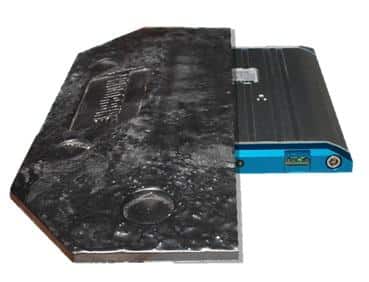
NC-350 Portable Traffic Analyzer
Traffic congestion costs Americans $63.1 billion dollars per year. Traffic studies have been used to successfully mitigate congestion by adding resources to key areas. Traffic analyzers are the integral part of traffic studies and are used to measure traffic flow and classify vehicles. The NC-350 Traffic Analyzer is the most portable, advanced and easiest to use traffic analyzer on the market allowing you to program and deploy advanced traffic studies in just seconds!
Overview
Portable traffic analyzers are small, battery operated, all-weather devices that are temporarily placed on road surfaces to:
- Count Traffic
- Measure Vehicle Length
- Measure Vehicle Speed
- Measure Surface Temperature
After a pre-determined time the devices are removed from the road and data is transferred to a computer via:
- USB Cable; or
- Bluetooth Wireless Technology
Advantages of the NC-350 Traffic Analyzer
- Small footprint captures true driver behavior
- Small size allows it to go where many analyzers can’t
- Industry leading accuracy
- Quick and easy deployment keeps installer safer
- Automatically compiles multiple studies
- Automatically generates summary and detailed traffic reports
Typical Applications
Traffic Studies
- Stop sign, traffic light compliance
- Posted speed compliance
- Road construction
- Thruways
- Exit and entrance ramps
Vehicle Volume Studies
- Malls
- Recreational areas
- Construction zones
- Airports
- Casinos
- Military bases
How does it work?
An analyzer uses two rare earth alloy magnets mounted inside a case to generate an ambient magnetic field around the device. Vehicles and other objects that contain ferrous (iron) materials will disturb this magnetic field, and this disturbance is measured by the on-board magnetic sensors.
As a vehicle approaches the magnetic sensors, a disturbance in the magnetic field first trips the A sensor. The same disturbance then triggers sensor B. The time between those events is used to determine vehicle speed.
As the vehicle passes over both sensors, the system begins measuring how long it takes for the vehicle to move off both sensors. This time, combined with the speed observed will determine the length.






